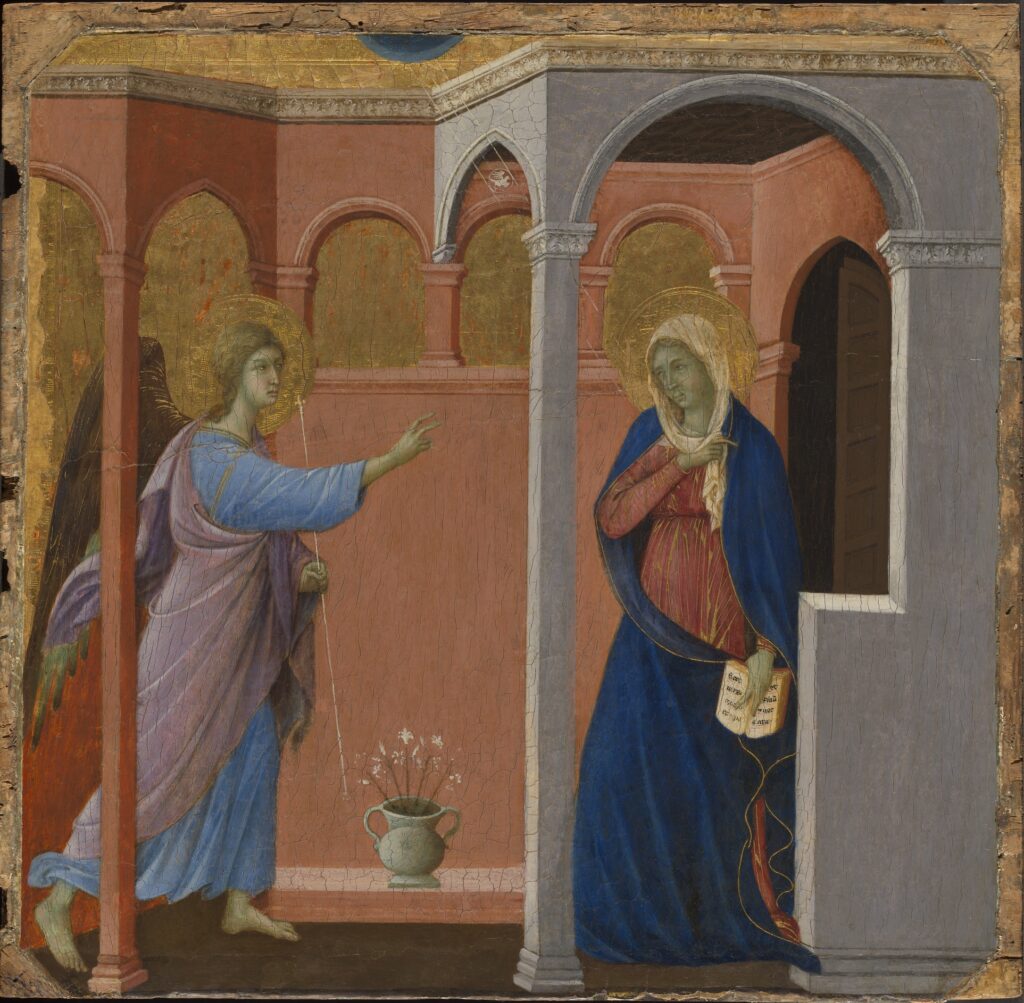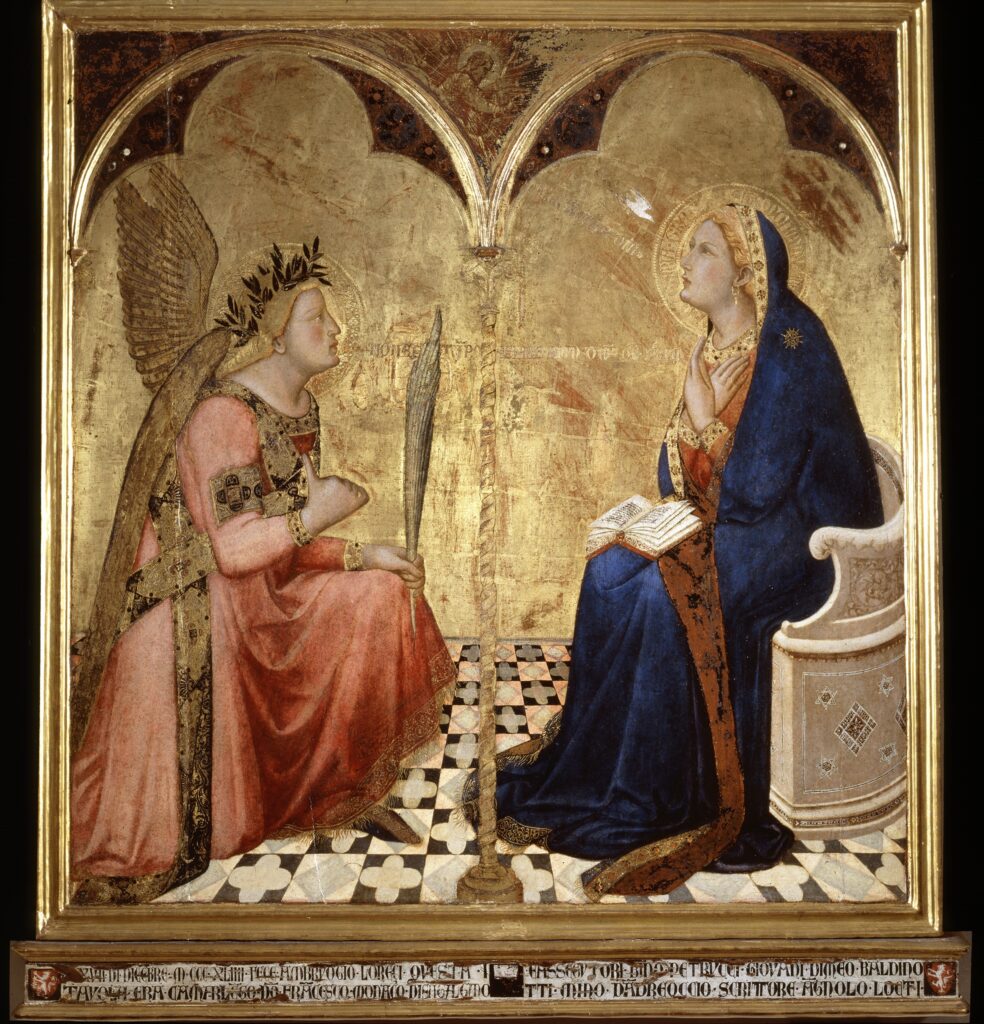Likely a Once-in-a-Lifetime Exhibition, ‘Siena: The Rise of Painting, 1300-1350’ Is Set To Open at the Met
The contribution of Sienese art to the history and development of Western painting and, by fiat, world culture is pretty damned estimable. The grand reunion of art pulled off here is nothing short of a curatorial coup.

Showstoppers come in all shapes and sizes — at least, that’s one of the upshots of the Metropolitan Museum of Art’s extraordinary new exhibition, “Siena: The Rise of Painting, 1300-1350.” The show is set to open this coming Sunday.
At its center is Pietro Lorenzetti’s “Tralati Altarpiece” (1320), a towering edifice measuring some 9 feet tall and 10 feet across that has been airlifted, it would seem, from Santa Maria della Pieve, a church at Tuscany, Italy. The Met has installed it on a raised platform, taking a cue from a 16th century Renaissance painter, architect, and historian, Giorgio Vasari, who noted that the altarpiece was once situated in a similar manner. The piece has been lit with the requisite nuance and drama.
So, yeah, wow. But physical scale isn’t everything. Toward the three-quarters mark of “The Rise of Painting,” visitors will come across a vitrine holding Simone Martini’s “Orsini Polyptych” (1333-40), a suite of paintings in which each panel measures about the size of a sheet of printing paper. Originally conceived as a portable series of devotional images that would unfold like an accordion, the “Orsini Polyptych” was still in one piece toward the end of the 18th century. It was subsequently taken apart and its constituent parts were dispersed to collections in France, Belgium, and Germany.
A grand reunion, then, is on display at the Met, but that’s not the only one. In what is nothing short of a curatorial coup, the Met’s curator in charge of European paintings, Stephan Wolohojian, working alongside Laura Llewellyn at London’s National Gallery, the director of the National Gallery of Ireland, Caroline Campbell, and a professor, Joanna Cannon, has reassembled a set of paintings that once served as the base for Duccio di Buoninsegna’s altarpiece, “The Maestà” (circa 1308-11). The eight squarish panels, each of which is devoted to the life and teachings of Christ, are seen as they were intended for the first time in centuries. The cumulative effect makes the heart beat faster.

How many favors were called in by the curatorial team and how many arms twisted? Pictures fully attributed to Duccio and Martini are few and far between and the same goes for their coeval in “The Rise of Painting,” Ambrogio Lorenzetti. The contribution of Sienese art to the history and development of Western painting and, by fiat, world culture is pretty damned estimable — sin qua non and all that. The Met’s director and chief executive officer, Max Hollein, is touting the show as an event unlikely to happen again in our lifetimes. We should take him at his word.
The exhibition begins with a bit of hometown throat-clearing: The first picture we encounter is the Met’s own “Virgin and Child (The Stoclet Madonna)” (circa 1290–1300). Do you remember the hubbub surrounding its acquisition that took place almost 20 years ago to the day? A cool $45 million was laid down for the last Duccio painting on the open market. It’s an all but unimaginable amount of money, but there can be no doubt that the Met’s collection has benefited by its inclusion: The museum has brought to public delectation what was once in the purview of private hands.
An underlying aim of “The Rise of Painting” — in many respects, the chip on its shoulder — is to make a case for Siena as an equal to Florence in terms of artistic capital. “Spurred on by competitiveness and curiosity,” our curators note, “the leading Sienese painters pushed the boundaries of what painting could be.”

Among their painterly innovations was an increasing degree of illusionism and, with that, a relationship with the divine that was unprecedented in its naturalism and immediacy. It’s worth reiterating that Duccio’s “Virgin and Child” takes place not in an exalted realm but in the here-and-now: A parapet is all that separates us from this particular mother and child.
“The Rise of Painting” surrounds the pictures on view with a selective array of sculptures, metalwork, manuscripts, boxes, bowls, and textiles — all of which exhibit a level of delicacy, intimacy, and exactitude that beggar contemporary standards of craft.
The object likely to warrant the most Instagram posts is Lorenzetti’s “The Annunciation” (1344), a picture originally commissioned by, go figure, the Tuscan tax authority. Pay particular attention to the angel Gabriel: Not only does he come bearing news, he gives Mary a firm thumbs-up.
Talk about humanizing the otherworldly. The Lorenzetti masterwork is but one of the many glories featured in an exhibition guaranteed to reward multiple visits.

